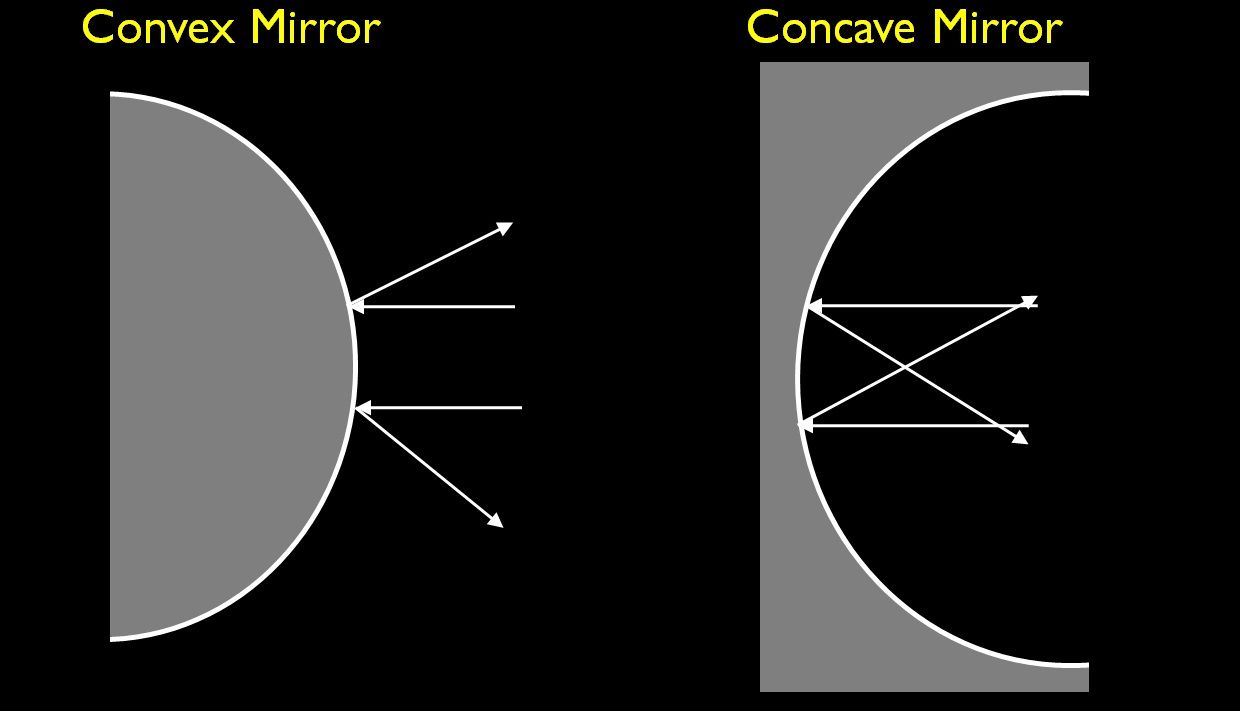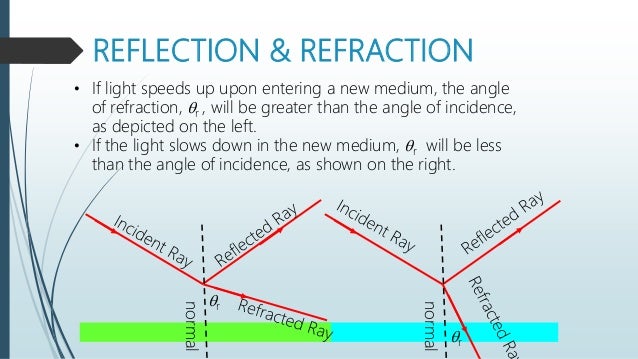The phenomenon of bouncing back of light falling on an object in the same medium is known as a reflection of light. For example: We are not able to see anything on entering a dark room but once we switch on the lights, everything will be visible. Reflection of light is a popular topic in Physics, listed in the Optics chapter. Let’s explore more about this topic through this detailed blog. Ref
Related Read: Basic Physics Formulas & Notes for Competitive Exams
This Blog Includes:
What is Reflection of Light?
To begin with, the reflection of light occurs whenever a ray of light falls on a smooth polished surface and bounces back. In other words, the ray of light approaching any surface results in the reflection of the light. Further, the ray of light which falls on the surface is known as an Incident ray while the ray of light which gets reflected is called a Reflected ray. Also, if a perpendicular is to be drawn between the two rays on the reflecting surface, it is known as a Normal.

Incident Ray= It is the ray that falls on the surface
Reflected Ray= The ray which is reflected from the surface
Normal = Perpendicular on the polished surface
P= Point of reflection
i= Angle of Incidence
r= Angle of Reflection
Related Read: Physics Project for Class 12
Laws of Reflection
After understanding the meaning of reflection, you must also understand its two imperative laws. Using these laws, the reflection of the incident ray on various surfaces like a plane mirror, water, metal surfaces, etc can be determined. For instance, if we consider a plane mirror, here are the laws of reflection:
- The incident ray, the normal and the reflected ray must lie in the same plane.
- The angle of incidence (i) = The angle of reflection (r).
Quick Read: Experiment With Diverse Career in Physics
Types of Reflection
While exploring the basics of the reflection of light, it is also important to go through the different types of reflection. Whenever we change the basic elements or the form of basic elements involved in this phenomenon, the result also varies. Following are the main three types of reflection:
- Regular Reflection
- Diffused Reflection
- Multiple Reflection
Also Read: Class 12 Physics Chapters
Regular Reflection
Regular Reflection can also be referred to as Specular Reflection and is simply understood by using a plane mirror. This mirror used for reflection of light is not the regular mirror we see around us, rather it is a glass which is heavily coated with a uniform layer of highly reflective material such as a powder. As it is coated, the surface reflects all the light which falls on it i.e., there is not much variation in both the angles of reflection at multiple points. Due to this minimal variation, we can say that all the haziness and the blurriness are completely gone.

Check Out: BSc Physics
Diffused Reflection
To explore the meaning of diffused reflection, let us consider reflective surfaces other than mirrors. The common surfaces which can be used for diffusion of light are comparatively rough as they are made up of different material than glass and contain some marks, scratches, dust or dents. All these things hamper the quality and brightness of reflection. Thus, the comparison of both the angles of reflection on such rough surfaces is completely distorted. In diffused reflection, the incident ray falls on different points and gets reflected in an entirely different direction and hence, we see non-shiny objects.

Read About: What is Total Internal Reflection?
Multiple Reflection
For both regular and diffused reflection of light, a single mirror is used while when we take two mirrors, a single source of light can be reflected multiple times. This type of reflection is only possible when the intensity of the light becomes so low that we cannot see it. Infinite images will be formed in multiple reflections, as each image is the result of another image.
The number of images varies as per the angle between two mirrors. If we decrease the angle, the number of images increases. The number of images becomes infinite when the angle between the two mirrors is zero i.e, they are parallel. Here is a formula to calculate the number of images for diffused reflection of light:

Concave Mirror
A spherical mirror, whose reflecting surface is curved inwards, that is, faces towards the centre of the sphere, is called a concave mirror. A concave mirror can be compared to the inside of the spoon. Concave mirrors are the reflecting objects that are used in reflecting telescopes.

Convex Mirror
A spherical mirror whose reflecting surface is curved outwards is called a convex mirror. A convex mirror can be compared to the outside of a balloon. A convex mirror is used as a rear-view mirror and for security purposes.
Many parallel rays hit a convex mirror, they reflect outwards and travel directly away from an imaginary focal point (F).
Scattering of Light
When light hits very small gas particles, water droplets or even dust particles, it scatters the light. The amount of scattering of the light depends on the wavelength of light and the size of the particle. Light on the sky is filled with all the colours of the rainbow i.e. VIBGYOR. So, the question is ‘Why is the Sky Blue?’
It is because light hits different particles in the atmosphere and it scatters in all directions. Since blue has a smaller wavelength than Red, it is scattered more than red. That is why the sky looks blue.
Examples of Reflection of Light in daily life
Some of the most interesting examples of reflection of light in daily life are:
The Blue Sky is because light hits different particles in the atmosphere and it scatters in all directions. Since blue has a smaller wavelength than Red, it is scattered more than red. That is why the sky looks blue.

- The Sunset is Red because when the sunset happens, the sky has already scattered most of the blue light as it has travelled around the atmosphere since the day. So, the red light dominates during a Sunset.
- Clouds look White because the cloud’s water droplets are much larger than the wavelength of light. So, all the colours get scattered in different directions to create white colour.
Light Reflection and Refraction
Light Reflection and Refraction are two different properties of light. The major difference between the two is:

The reflection of light occurs whenever a ray of light falls on a smooth polished surface and bounces back. In other words, the ray of light approaching any surface results in the reflection of the light. The refraction of light occurs when a ray of light moves from one medium to another and it changes its direction of travel.
Reflection of Light Important Questions
- A concave lens has a focal length of 20 cm. At what distance from the lens a 5 cm tall object be placed so that it forms an image at 15 cm from the lens? Also, calculate the size of the image formed.
- The refractive index of diamond is 2.42”. What is the meaning of this statement in relation to the speed of light?
- Draw the following diagram in your answer book and show the formation of the image of the object AB with the help of suitable rays.
- An object 2 cm in size is placed 30 cm in front of a concave mirror of focal length 15 cm. At what distance from the mirror should a screen be placed in order to obtain a sharp image? What will be the nature and the size of the image formed? Draw a ray diagram to show the formation of the image in this case.
- A ray of light, incident obliquely on a face of a rectangular glass slab placed in the air, emerges from the opposite face parallel to the incident ray. State two factors on which the lateral displacement of the emergent ray depends.
- What is the minimum number of rays required for locating the image formed by a concave mirror for an object? Draw a ray diagram to show the formation of a virtual image by a concave mirror.
- “The refractive index of carbon disulphide is 1.63.” What is the meaning of this statement in relation to the speed of light?
- The outer surface of a hollow sphere of aluminium of radius 50 cm is to be used as a mirror. What will be the focal length of this mirror? Which type of spherical mirror will it provide?
- A girl was playing with a thin beam of light from her laser torch by directing it from different directions on a convex lens held vertically. She was surprised to see that in a particular direction the beam of light continues to move along the same direction after passing through the lens. State the reason for this observation.
- A ray of light enters a rectangular glass slab of refractive index 1.5. It is found that the ray emerges from the opposite face of the slab without being displaced. If its speed in air is 3 x 108 ms-1 then what is its speed in glass?
- The speed of light in a transparent medium is 0.6 times that of its speed in vacuum. What is the refractive index of the medium?
Reflection of Light PDF
Here is a PDF for this topic to help you learn it better-
Also Read:
- Deleted Syllabus of Class 10th
- CBSE Class 10 Sample Papers
- Magnetic Effects Of Electric Current Class 10
- Carbon and ts Compounds Class 10
- Acids, Bases And Salts Class 10
Thus, we hope that this blog has helped you understand the meaning, types and laws of reflection of light. Preparing for competitive exams like GRE, GMAT, IELTS or SAT? Sign up for an online demo session with our Leverage Edu career and we will assist in creating the right preparation strategy as well as providing you with the required study material and exam tips to ace your test successfully
-
keep a good deal in
-
Dear Sandra,
We sincerely hope that you enjoyed reading this article and it helped you understand reflection. We are also including some addition articles here that you mgight enjoy reading:
- 16 Interesting Facts About Light for Kids
- Refraction of Light: Meaning, Applications & Examples
- What is Total Internal Reflection?
We’d love to hear from you again. Let us know if you have any question or feedback in the comments.
-

 One app for all your study abroad needs
One app for all your study abroad needs
























 45,000+ students trusted us with their dreams. Take the first step today!
45,000+ students trusted us with their dreams. Take the first step today!



2 comments
keep a good deal in
Dear Sandra,
We sincerely hope that you enjoyed reading this article and it helped you understand reflection. We are also including some addition articles here that you mgight enjoy reading:
We’d love to hear from you again. Let us know if you have any question or feedback in the comments.